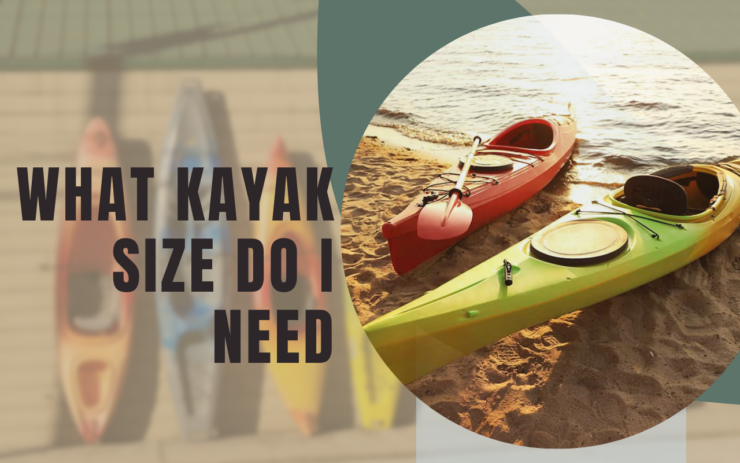What do the different kayak lengths really mean and do they matter?
Browsing for a new item that you do not know much about is always challenging. For obvious reasons and certain hidden ones, it is difficult to make the right choice out of so many when you are brand new to something. When kayaking is concerned, the initial dilemma for most future paddlers surrounds the issue of kayak length. How long does a kayak need to be, why does it matter, and can I go wrong? These are the questions that dominate the minds of anyone who wonders whether they need their kayak to be 8, 10, 12, or 14 feet long.
Not only does it matter, but it is actually crucial for certain uses and scenarios in which you will be using these vessels. If it were not the case, there would only be a single universal length, and everyone would be getting the same model. There are many differences between all four of these and in this article, we tell you what they are. More importantly, by the end of this read, you will know exactly what size you need since you will have the knowledge and information to make the best choice based on your needs. Read on to find out how and why to choose the right kayak length.
Table of Contents
ToggleAbout 8 Feet Long Kayaks
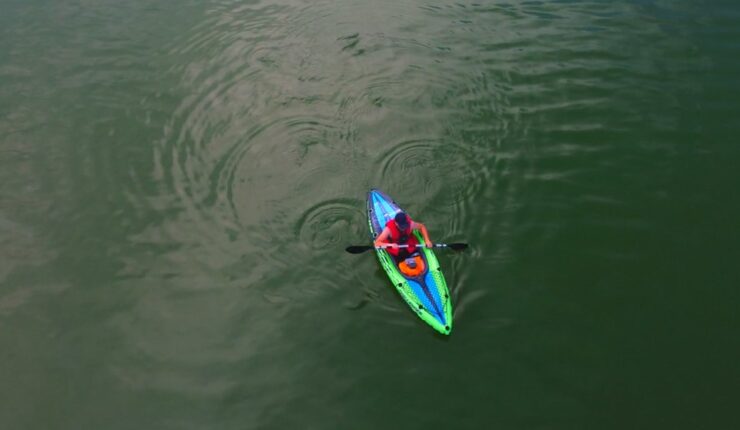
The fact that these are the smallest on the list does not mean that these are the shortest kayaks in existence. Far from it as there are many smaller varieties. In this guide, however, we are focusing on the most common lengths and 8-foot-long kayaks are the shortest of those. Apart from obviously being the best choice for kids and adults of smaller stature, the shorter length has many other benefits (and shortcomings).
The most notable use of kayaks that are around 8 feet long is in whitewater surroundings. They are much more maneuverable and capable of sharper turns because there are not a lot of lengths to work with. They turn around their axis and make U-turns easily. They are slow in the open water but they do not need speed in the rapids. For lakes, wide calm rivers, and oceans, you definitely need something longer and narrower.
Speaking of width, most of these kayaks are wider and therefore a lot more stable. They need to be because whitewater kayaking requires additional stability. Short kayaks are more stable because of the length-to-width ratio. The longer and narrower the kayak, the less stability it needs. This makes 8-foot kayaks among the most stable. Of course, there are also skinny, narrow models but those are for experts who use them in races and other competitive events. If you need something nimble, small, and stable, these are for you.
About 10 Feet Long Kayaks
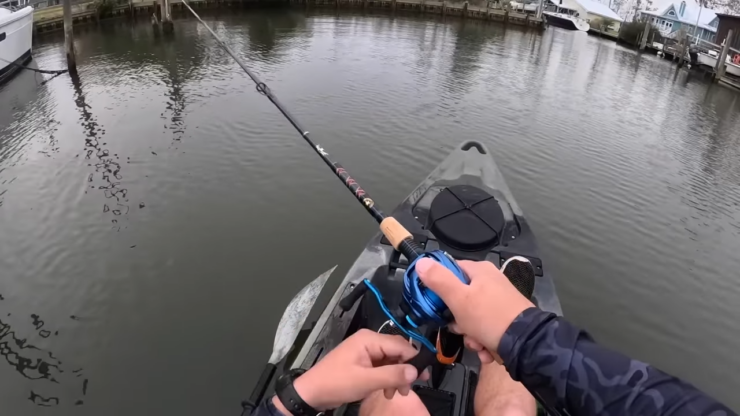
The second-longest variety we talk about today are those kayaks that are at least 10 feet in length. The extra two feet may not seem a lot on the surface, but they really are. These are actually the most common kayaks right now as most beginners, amateurs, and recreational paddlers opt for the 10-foot option. Similarly stable to their shorter cousins, they have more space to work with which gives more storage capacity and they tend to be faster.
Kayaks that are 10 feet long are also popular among fishermen. Kayak fishing is on the rise and since the best models are usually between 10 and 11 feet long, most anglers pick them for their fish-catching sessions. They have storage compartments in the bow and stern, bungee cords, and numerous mounts for rods and cups. Also, there is extra space in the back for bags, crates, or coolers.
These are also the most versatile kayaks out there as both narrow and wide models exist. Again, the wider ones are more stable while the narrow ones are faster but less stable. Novice paddlers benefit most from the stable, wide models as they balance balancing speed and stability quite well. Maneuverability and turning are good, and equally optimal in tight spaces and more open waters. If you want calmer lakes and slow rivers for your kayaking environment, a 10-foot kayak is the best starting point.
About 12 Feet Long Kayaks
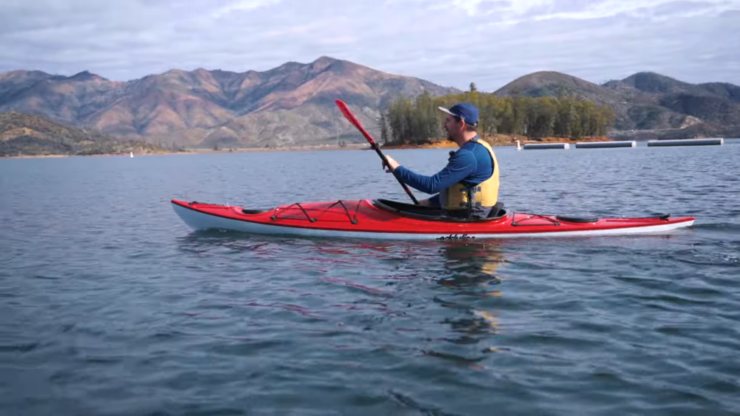
This is where we get into the territory of longer kayak models. As you know by now, as the kayaks get longer, they also get speeder. However, they also get less and less stable. The 12-foot-long paddling boats are great for intermediate kayakers who prefer covering more ground during a single kayaking trip, especially in longer and calmer rivers. They are also great for bigger lakes and oceans.
The balance between maneuverability and speed in these kayaks is the best. They are faster than most 10-foot kayaks, but many of them are also more stable. Since they are faster, they cut through the waves better and with greater ease, which translates to paddling effort. They require less work to reach top speeds which is great for touring and tracking. Of course, they are not as maneuverable as the previous two versions, but they are still much niftier than the longest, 14-foot kayaks.
They offer plenty of space for storage and many different varieties exist. Fishing kayaks can also be 12 feet long, both sit-inside and sit-on-top models. Confident and experienced kayakers usually opt for 12 feet in length with their boats as they do tend to be more serious and professional. If you are still unsure of your skills, it would be best not to get one just yet. If you consider yourself an upper-intermediate, by all means, browse the 12-footers.
About 14 Feet Long Kayaks
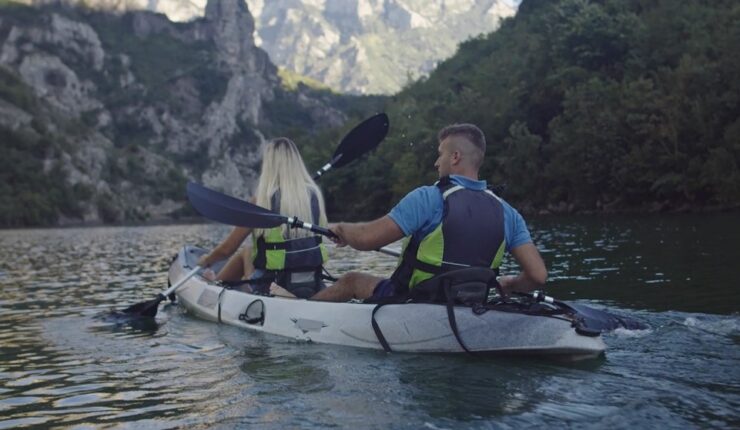
Last and obviously not least are the longest of the common kayak varieties, those that are at least 14 feet in length. Right off the bat, it may seem that this is too long and perhaps unnecessary. However, the reality is not like that at all. There are many situations where a longer kayak is more appropriate. For long paddle trips in the ocean, big rivers, or large lakes, this is the best option particularly if you expect day-long paddles and long distances.
These are the fastest of the bunch, especially with their top-end speed, or maximum speed. Once you reach it, you will be flying over the water. This means less drag as well because they are much narrower than the rest, translating to much less effort on the paddler’s part. They track the best and there are no corrections of the straight paddling line needed, something that is annoying with shorter models. All of this is what makes 14–footers the best for long, straight journeys.
They also have the most storage available of course, both in the form of closed and open storage. Water-sealed hatches are common, at least two of them, as are bungee cords and plenty of open room in the front and back. They are however the worst at turning and maneuvering simply because they are not meant for it. If you need to make an emergency turn, you will not really be able to. They take a long time to make a U-turn because of their length and wide turning angle. There are also issues with stability due to their narrowness, which does get problematic in stronger winds.
Other Factors to Consider
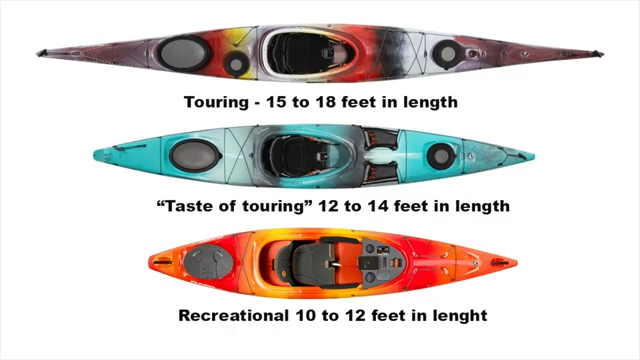
Now that you know about each of them, there is nothing left to do but make the final choice. It always comes down to your needs with the ultimate decision though. For example, are you a beginner or do you already have some experience? Where will you be paddling the most and what are you looking for from your sessions? Is it the whitewater rapids or calmer, bigger waters? Do you want to go faster or turn easier? Do you need more storage? How important is balance/stability?
The design choices are not as important because each of these has numerous options. Any of these four lengths can be a sit-on-top or a sit-inside variety. They all come with flat, round, V-shape, and U-shape hulls. They can be inflatable, foldable, and of course robust. A lot of customers also take storage and transportation into account. Do you have enough room at home to keep a longer kayak? How do you plan to bring it to the water and back? It is a complicated thing to carry, store, and transport these vessels so everything needs to be thought of long and hard.
If you are very serious about another reactivity like hunting, fishing, birdwatching, or camping, your kayak needs to help you and support your needs. This is where load capacity and storage play a big part but also versatility and ease of use. Once you have covered everything, you should have a good idea of what lengths are too small, what may be too big, and which one is ideal for your specific case. Take your time, evaluate your needs, and then pick between 8, 10, 12, or 14 feet. It is a big purchase and a big deal so good luck!
Adelaide Gentry, a seasoned kayaking enthusiast and expert, is the driving force behind KayakPaddling.net. With over a decade of experience navigating the world’s most challenging waterways, Adelaide combines her passion for adventure with a deep knowledge of kayaking to provide insightful and practical guidance for paddlers of all levels.
Related Posts:
- 16 Best Kayak For Beginners 2024 - Kayaking Adventure Gear
- 10 Best Inflatable Kayak 2024 - Rivers, Lakes & Open Seas
- Heavy Duty Fishing: 11 Best Rods And Reels For Big Fish 2024
- 12 Best Motorized Kayak 2024 - Start Your Aquatic Adventure!
- 10 Best Kayaks For Camping 2024 - Lightweight and…
- 10 Best Sit-Inside Fishing Kayaks 2024 -…

